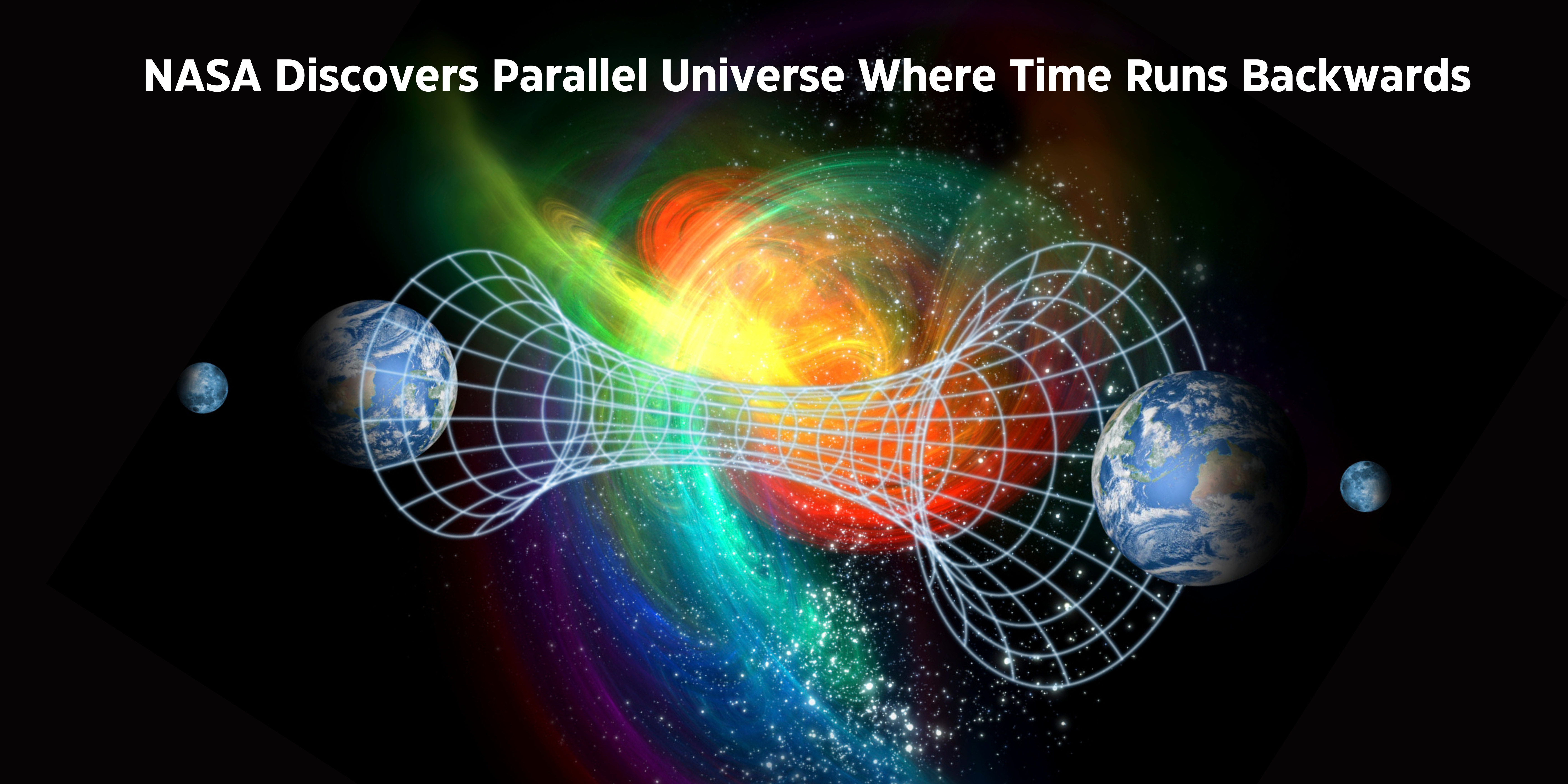Table of Contents
A Universe Unlike Our Own
Imagine a world where time doesn’t move forward like it does for us, but instead runs backward. This might sound like the plot of a science fiction movie. Still, NASA scientists have discovered evidence that hints at the existence of a parallel universe—a reality completely different from ours. In this universe, time might be flowing in reverse, raising fascinating questions about the nature of our cosmos.
This blog will explore what this discovery means, the science behind it, and how it could change our understanding of the universe. We’ll also discuss how the idea of parallel universes has intrigued scientists for decades and what comes next in this exciting journey.
What is a Parallel Universe?
A parallel universe is a hypothetical world that exists alongside our own but with different rules of physics or alternate timelines. These universes are part of a larger concept called the multiverse, which suggests that multiple universes could exist simultaneously, each with its own unique properties.
The idea of a parallel universe has been discussed in both science and fiction. While there’s no concrete proof of its existence, NASA’s recent discovery gives us a glimpse into this extraordinary possibility.
The Discovery: A Universe Running Backwards
NASA scientists made this potential breakthrough while conducting experiments in Antarctica. They used a special balloon to carry scientific instruments into the atmosphere to study cosmic rays—tiny particles from outer space. During these experiments, they detected something unusual: particles that seemed to be traveling in the wrong direction.
Normally, these particles move downward through the Earth’s atmosphere, but the team found evidence of particles moving upward. This strange behavior suggests that these particles might be coming from a parallel universe where the laws of physics are reversed. In such a universe, time could flow backward, creating a very different reality.
How Does Time Run Backwards?
Time running backward means that events would unfold in reverse order. For example, instead of dropping a cup and watching it break, you might see the broken pieces come back together and rise into your hand. This concept challenges everything we know about how time works in our universe.
Scientists believe that in this parallel universe, the Big Bang—the event that created our universe—might have worked differently. Instead of time starting and moving forward, time could have started and moved in the opposite direction. While this idea sounds incredible, it fits within certain theories of physics.
The Science Behind the Discovery
- Cosmic Rays and ANITA Experiment:
The discovery was made using NASA’s ANITA (Antarctic Impulsive Transient Antenna). ANITA detects high-energy particles called neutrinos. These neutrinos usually pass through Earth without interaction, but the ones detected by ANITA appeared to defy expectations by moving upward instead of downward. - Symmetry in Physics:
Physicists have long debated the idea of symmetry in the universe. If there’s a universe where time moves forward, a symmetric universe may exist where time moves backward. This discovery gives scientists a reason to explore this theory further. - Quantum Mechanics:
At the quantum level, particles can behave in strange and unpredictable ways. This discovery suggests that quantum mechanics might be key to understanding parallel universes.
Implications of a Parallel Universe
If a parallel universe where time runs backwards truly exists, it could change our understanding of reality in profound ways:
- New Laws of Physics:
Scientists may need to rewrite some of the fundamental laws of physics to include these discoveries. - Alternate Realities:
The existence of parallel universes raises questions about whether alternate versions of ourselves might exist in these worlds. - Time Travel Possibilities:
If time can flow backwards in another universe, could we someday find a way to move between these timelines? - Scientific and Philosophical Questions:
This discovery challenges our understanding of life, the universe, and our place in it.
Parallel Universes in Popular Culture
The idea of parallel universes has captured our imagination for years. The concept has been explored in countless ways, from movies like Interstellar and Doctor Strange to TV shows like Stranger Things. While these stories are fictional, they share one thing in common: the belief that there’s more to the universe than meets the eye.
Challenges and Criticism
While this discovery is exciting, it’s important to note that it’s still in the early stages. Here are some challenges:
- More Evidence Needed:
The findings need to be confirmed through further experiments and studies. - Skepticism from Scientists:
Some scientists believe the unusual particle behavior could be explained by phenomena within our universe rather than a parallel one. - Complex Physics:
Understanding and proving the existence of parallel universes requires advancements in technology and theoretical physics.
What’s Next for NASA and Scientists?
NASA and other researchers will continue to study these findings. Future experiments could involve:
- More Advanced Equipment:
Using better tools to detect and analyze particles that behave strangely. - Collaboration:
Partnering with other scientific organizations to validate the discovery. - Expanding Research:
Exploring other parts of the world or space where similar phenomena might occur.
Conclusion: A Glimpse Into the Unknown
The possibility of a parallel universe where time runs backward is one of the most fascinating discoveries in modern science. While there’s still much to learn, it reminds us of how little we truly know about the universe. Whether or not we ever fully understand this mysterious reality, the search for answers will undoubtedly lead to breakthroughs and expand our understanding of existence.
As we continue to explore the cosmos, discoveries like this inspire us to keep asking big questions. Who knows what other secrets the universe might hold? One thing is certain: the journey to uncover them will be as exciting as the discoveries themselves.
